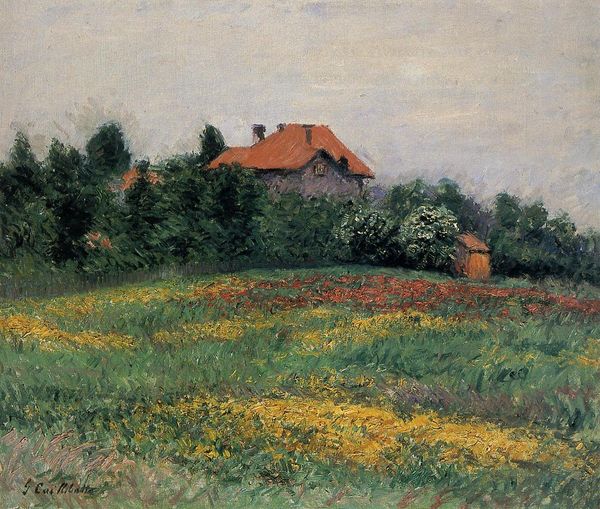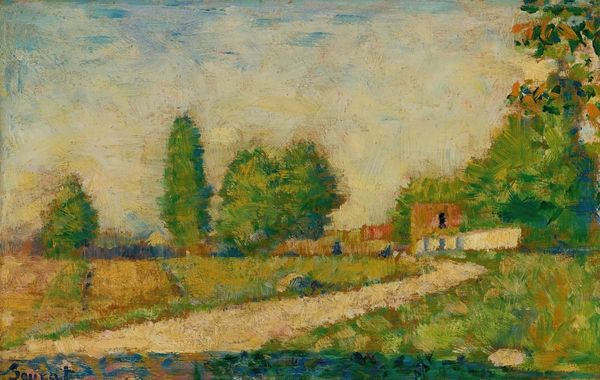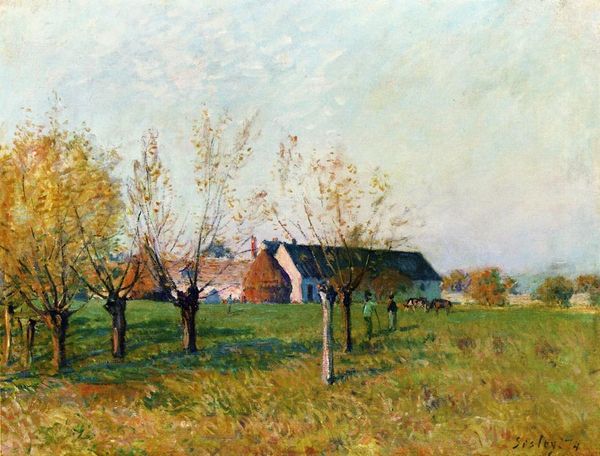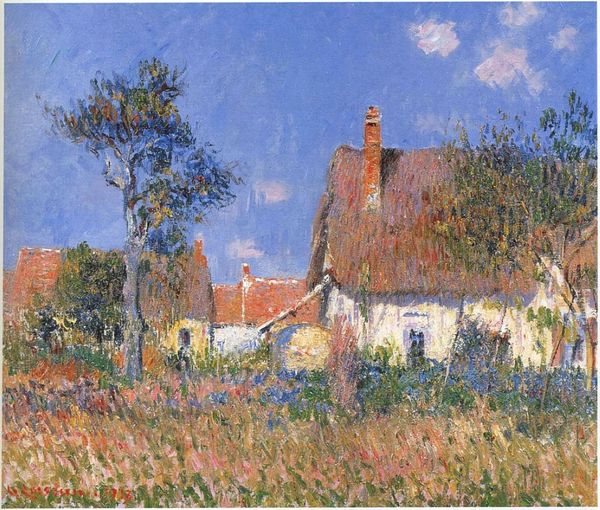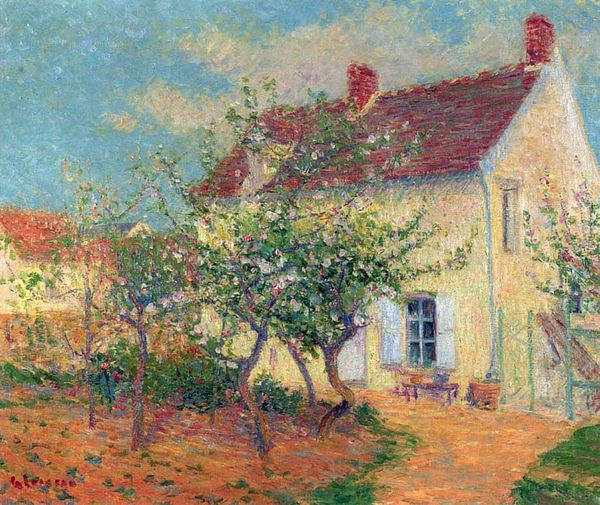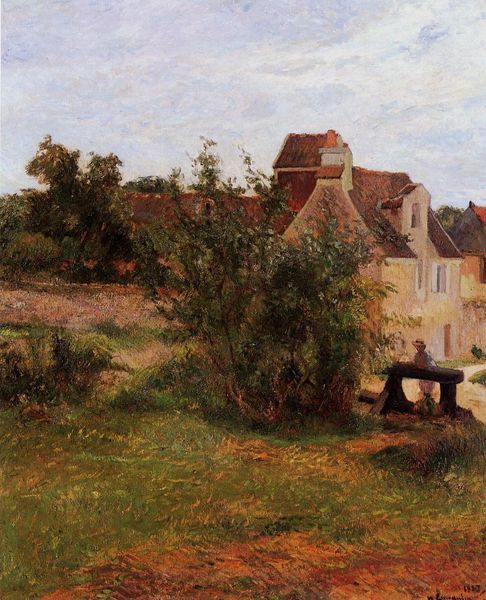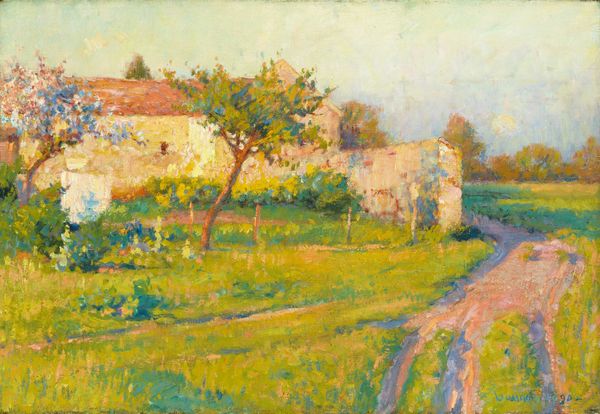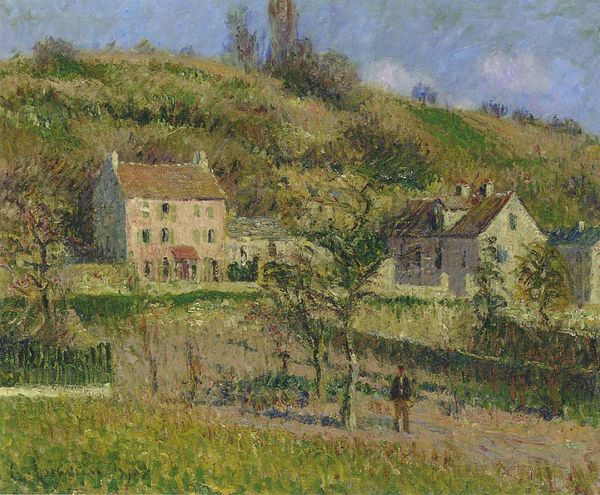
Landscape in the Ile-de-France 1882
0:00
0:00
georgesseurat
Musée des Beaux-Arts de Bordeaux, Bordeaux, France
#
abstract painting
#
house
#
impressionist landscape
#
possibly oil pastel
#
oil painting
#
fluid art
#
acrylic on canvas
#
naturalistic tone
#
seascape
#
france
#
watercolor
#
expressionist
#
arm
Dimensions: 32.5 x 40.5 cm
Copyright: Public domain
Editor: So, this is Georges Seurat's "Landscape in the Ile-de-France," painted around 1882. It feels very serene, almost dreamlike with the soft brushstrokes. How do you interpret this work? Curator: For me, this painting invites a consideration of land ownership and the representation of rural spaces in late 19th-century France. Think about who had access to leisure, to simply observe and paint a landscape. Who is conspicuously absent? Editor: I hadn’t thought about it that way. I was focusing on the house, maybe as a symbol of stability. Curator: And whose stability are we talking about? Notice the almost geometrical separation of the planes: the dark, undefined foreground, the vast field, the wall that encloses the house. It evokes boundaries, both physical and social. Does this composition emphasize inclusion or exclusion, privilege or marginalization? Editor: Exclusion, definitely. The foreground feels almost like a barrier, keeping us separate from the comfortable scene beyond the wall. The field seems expansive, yet the house feels very closed off. Curator: Exactly. And it makes you wonder, doesn't it, about the societal forces at play during the Impressionist era, about class, and the unseen labor that supported such idyllic visions? What is the significance of portraying the Ile-de-France in this particular manner at this time? Editor: Now I’m seeing it as a statement about the divide between the landowners and the workers, between the public and the private. I definitely learned a new way to see landscapes. Curator: And that’s the power of art, to reveal hidden narratives, prompting us to reconsider history, representation, and the social contexts in which art is created and viewed.
Comments
No comments
Be the first to comment and join the conversation on the ultimate creative platform.
